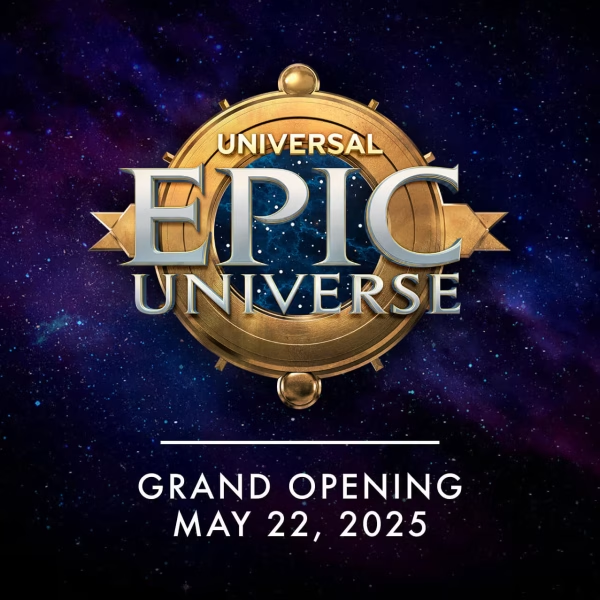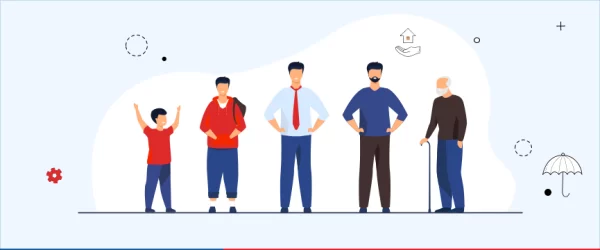More teens are turning away from the traditional novel for their personal pleasure reading
Teenagers are not reading as much anymore.
While this statement may seem highly debatable, the facts surely prove otherwise.
In the 1970s, about 60 percent of high school seniors read a book, a magazine or a newspaper every day. In 2016, that number plummeted to a mere 16 percent. This is according to Monitoring the Future, a decades-long survey project conducted by the University of Michigan and analyzed by professors at San Diego University.
The results of the study point to the ever-growing prevalence of digital media usage among teenagers, which has been luring today’s youth toward social platforms such as Instagram, SnapChat, and Tik Tok, and away from traditional entertainment forms like books, magazines, and even television. Not to mention the typical teenage pressures such as jobs, schoolwork/tests, sports, complicated family matters, relationships, and future anxieties that are also caught up in this dramatic battle.
So yes, these teens are still reading, but they are reading short articles and Instagram captions, not meaningful articles and books that dive into deep themes and require individualized attention, critical-thinking, and analytical reflection. Perhaps that’s why SAT reading scores in 2016 were the lowest they had ever been since record keeping began in 1972, based on statistics from College Board.
Not surprisingly, a third of U.S. teenagers have not read a book for pleasure in at least a year, according to a 2018 survey from the American Psychological Association (APA). And if they are reading, it is more likely to be fantasy/dystopian fiction, young adult novels, romance, or graphic novels and manga, attests Olympic Heights Media Specialist Ms. Sharon Neubauer, who has noticed the trend toward these genres in the school library. While some of those books may be immensely entertaining and easily appealing to the developing adolescent, they do not always contain the historical character, fundamental values, and key literary elements possessed by the classics espoused by the generations before us.
For instance, senior Bailey Bruni feels that the classics are “not really relevant today,” and that one should read what they enjoy. Not an avid reader, he finds that he can connect more with popular dystopian young adult series such as The Hunger Games than as he puts it, “outdated” classics such as Of Mice and Men, which was a summer reading assignment during his sophomore year.
However, these action-packed or romantically touching contemporary novels may instill today’s youth with a love for reading, or at least for that particular genre of their choosing, proving them, in a way, beneficial to fighting the digital media current. The modern-day English written in these books is typically much easier for kids to understand, and they can see themselves mirrored in the teenage protagonists and inside of the author’s imagined universe. By focusing on the future or studying societal relationships, teens can explore various themes such as the effects of technology, love, hope/dreams, prejudice, bullying, and abuse that may also be conveyed in the classics, but often require more critical analysis and exertion to discern their meanings.
With over 13,000 titles and hours currently spanning the entire school day (7:00-3:20), the OH media center welcomes anyone to come in, read, research, do homework, use the computers, and have a nice, quiet place to relax. Neubauer notes that out of the approximately two thousand students at this school, there are roughly a hundred students in the library daily during the mornings, but they are not reading the classics for their own personal leisure. “Students check out classic books only if they are required to read them,” Neubauer professes, placing some of the blame on the dull, old-fashioned front covers that many of the classics have. “I think that if we were able to update the classics or present them in a way that students can identify with them, we might have people reading them more.”
Yet, Neubauer, who holds nine years of experience as a media specialist, also sees the value in allowing students to read what interests them. That’s why for thirty minutes in each of her five classes she instructs her students to select whatever they want to read – whether it be a graphic novel, a magazine, a newspaper article, or any other reading material. “A lot of people would say that’s not reading, but it is. I would rather have a student read something that interests them than not read anything because they don’t want to read something that does not have any meaning to them or is out of date,” she claims.
Sophomore Gabby Davis offers a unique perspective on the reading debate. She finds many of the books required by English classes to be “over complicated and boring,” but reads online fan fictions for pleasure almost daily. Davis is a stellar example of a student who appreciates literature (in its modernized, more fan-made fun, and creative form), but does not favor being forced to read texts that she is not interested in. The AICE English Language student sees a greater value in reading for enjoyment over simply reading a book because it is considered a historical “classic,” such as The Scarlet Letter.
“I feel like in terms of classics it’s really subjective on what is considered a classic,” Davis notes. “New books that are coming out now are really good, but the older generations just won’t give them a chance.” To explain, Davis cites the memoir A Long Way Gone by Ishmael Beah, not recognized as a classic because it was published as recently as 2007, but assigned to incoming OH freshmen taking AICE General Paper. The book revolves around the turbulent life of a boy soldier in Sierra Leone and incorporates messages about the devastating effects of war and their toll on the human body. Davis thought the memoir was very interesting; its first person narrative, simple diction, and relevance to today’s global issues enable teenagers to easily sympathize and mourn with Ishmael Beah, the author and first person narrator.
On the other hand, these concepts do differ in that the classics, written by authors from the specific time period, possess such a historical integrity that they deserve a continued legacy of respect and reverence. For example, written in 1884, Mark Twain’s Adventures of Huckleberry Finn details a white, mischievous boy’s remarkable journey along the Mississippi River with a black slave as they escape toward freedom, while discovering the value of friendship along the way.
Although the institution of slavery had already been abolished in 1865 under the 13th Amendment to the U.S. Constitution, Twain sets his novel decades before it was written (when slavery was still legal) to criticize the racist segregation that was transpiring during the post-Civil War (Jim Crow) era and to question the morality of such a hypocritical society.
The Southern dialect in the novel may be difficult for some young readers to comprehend, but is evidence of its own historical narration, and the themes portrayed still resonate with today’s youth: the innocence and imagination of childhood, racism, inward vs outward appearance, friendship, death, guilt/shame, and empathy. Can we expect the average student of today’s technically sophisticated and globalized society to pick up this book voluntarily without school guidance? Highly unlikely, but even through this brief analysis we can grasp its significance in the canon of literature.
The AP English Literature students at OH are expected to read similarly challenging, thought-provoking texts that their teacher, Ms. Gina Woods, is able to selectively choose in order to prepare them for their three-hour AP exam in May. While she admits that she herself hated reading things that were assigned to her in high school because she wanted to read what she desired instead, she understands the importance of reading such difficult texts. “It will help you in any discipline or study,” Woods says. “I think a thorough study of literature or any liberal art helps us put ourselves into other people’s shoes and makes us more sympathetic and better humans.”
Bruni, who is currently enrolled in AICE Literature in English, attributes the fact that schools require students to read specific books and that it is “easier to watch or listen to something” as reasons for why he believes that teenagers do not have an incentive to read anymore. His teacher, Ms. Stephanie Bachar, also agrees with this statement, explaining how reading requires more time, energy, imagination, and effort than movies and television, which put the story in front of the viewer, so little effort is expected on their part. Both their interpretations are consistent with the diversity of students who enter the media center, which Neubauer reports is lacking in AP/AICE students, who are so overwhelmed and busy from their demanding coursework that they do not have the spare time or motivation to go to the school library and read, especially during lunch, their only break.
Reading, according to Bachar, is directly correlated with cultural awareness and writing ability. “Reading makes us better readers and writers. Reading allows us to develop empathy and compassion. Stories help us understand one another and see life through more than just one lens.”
To try to cultivate an interest in literature for her students, Bachar has dedicated her time preparing a variety of lessons and creative projects with purpose so that her students do not get bored with the same, monotonous routine of constantly reading and writing essays. Instead of taking multiple-choice novel tests, students in her AICE Literature classes are expected to do annotating and plan-writing tests for their selected works, which include twenty Robert Frost poems, two plays, and two passages of prose.
Acknowledging how she had taken AP English Literature in high school and was uninterested in it because it was “so focused on reading novels and answering short response questions,” Bachar divulges her surprise when she declared herself an English major in college after discovering a love for the subject in her undergraduate literature courses, which inspire her own lesson plans.
In contrast, Woods always had a passion for English. Having taken both AP English Language and AP English Literature when she was in high school, she believes the AP class set-up and its corresponding exam are beneficial for students to learn English because they reflect what students need to be able to know and do in college, especially if they are going into a liberal arts field. However, she is aware that her students are less knowledgeable in regards to the classics and their related allusionary techniques, disclosing, “I know that the teacher who taught AP Lit before me felt like she had students that were stronger readers who read more often and were also more steeped in the Bible and Greek mythology, and those are the foundations of classical literature.”
The growing reading deficiency, according to Woods, is particularly evident in the declining AP Literature scores over the years. In 2018, the AP Literature scores were at a record low: only 47.4 percent of students nationwide passed, continuing a multi-year trend of diminishing scores that was only slightly improved in 2019 to 50.1 percent.
“There’s no lack of intelligence among young people, but they do have less experience focusing for longer periods of time and reading long-form text,” lead author of Monitoring the Future Jean M. Twenge, PhD, says. “Being able to read long-form text is crucial for understanding complex issues and developing critical thinking skills. Democracies need informed voters and involved citizens who can think through issues, and that might be more difficult for people of all ages now that online information is the norm.”
This necessity for well-versed and literate future contributors to society is exactly the reason why Governor Ron Desantis officially removed Common Core standards from all Florida classrooms, implementing B.E.S.T. Standards in their replacement, which stands for Benchmarks for Excellent Student Thinking. Through this new pathway, students will learn financial literacy throughout high school, increased focus on writing, and civics instruction in grades from K through 12. The executive order’s plan, originally declared by Desantis in January 2019, hopes to “provide a roadmap to make Florida’s standards number one in the nation” and “outline a pathway for Florida to be the most literate state in the nation.”
In order for this to happen, however, students need to fulfill their part and stop associating reading as a “chore,” similar to doing the laundry or babysitting a younger sibling. Their abilities to think critically, process information, and understand one another as fellow humans depend on it. Books, no matter the type, send the reader on a journey through their own imagination, and can be both rewarding and fun.
Perhaps Dr. Seuss was right: “The more that you read the more things you know. The more that you learn, the more places you’ll go.”











